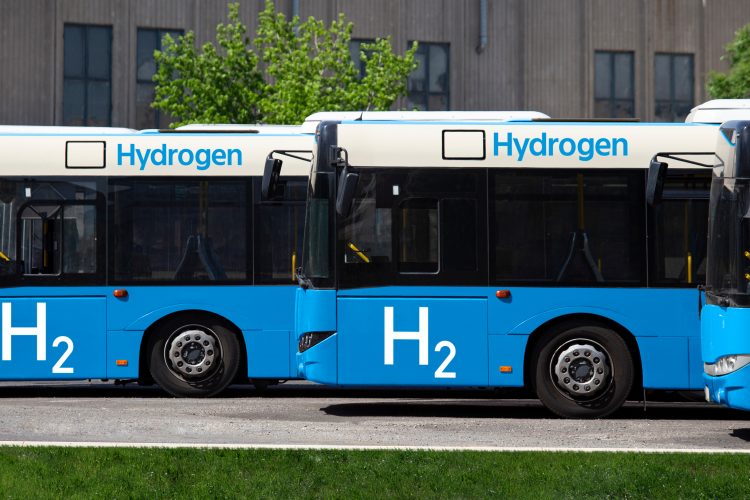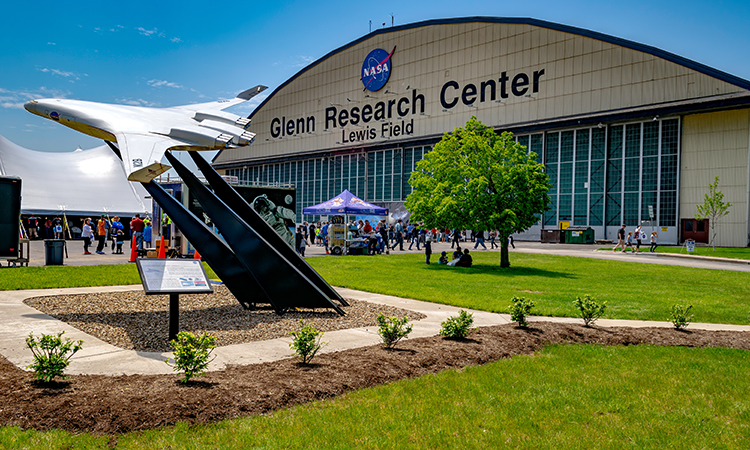Building a fuel cell future in Ohio transit
- Like
- Digg
- Del
- Tumblr
- VKontakte
- Buffer
- Love This
- Odnoklassniki
- Meneame
- Blogger
- Amazon
- Yahoo Mail
- Gmail
- AOL
- Newsvine
- HackerNews
- Evernote
- MySpace
- Mail.ru
- Viadeo
- Line
- Comments
- Yummly
- SMS
- Viber
- Telegram
- Subscribe
- Skype
- Facebook Messenger
- Kakao
- LiveJournal
- Yammer
- Edgar
- Fintel
- Mix
- Instapaper
- Copy Link
Posted: 5 August 2021 | Kirt Conrad - SARTA | No comments yet
Kirt Conrad, CEO at Stark Area Regional Transit Authority (SARTA), tells Intelligent Transport why the agency has opted for fuel cell electric buses over battery‑powered vehicles, and what the future holds for sustainable urban transport.


SARTA has opted to use fuel cell-powered buses
Why has SARTA adopted a fuel cell bus strategy and what led you to it?
SARTA had been working to try to begin an alternative fuels programme for some time. My first real interest in fuel cells goes back to 2005, when I met Stan Ovshinsky – a scientist and researcher that started a company called ECD Ovonics. He introduced me to the renewable hydrogen circle, so to speak, where you could take hydrogen out of water and then use that hydrogen in a fuel cell to create electricity. Immediately, I thought, “why aren’t we doing this everywhere?”
From then, I tried to get the fuel cell bus programme started, and Northeast Ohio – where I’m located – was as good a location as any; NASA has a research laboratory called NASA Glenn here, where all the power and energy research for NASA is conducted. They have done a lot of work that utilises fuel cells, so there’s a basis of knowledge in the region of the technology.
I put a team together and started applying for grants to be able to fund a fuel cell bus programme. We were successful in getting our first fuel cell grant and the SARTA board of trustees bought into the plan, though, as with anything new, there was some level of education required across the board to get them to understand the importance of launching the programme.
Ever since, we’ve been adding fuel cell vehicles to the fleet – we now have 18 in total, including the United States’ first hydrogen-powered paratransit vehicle. That’s starting to attract interest from other transit systems, too.
With our expertise growing, we launched a research component with Ohio State University and Cleveland State University called the Renewable Hydrogen Collaborative, where we’ve been conducting and publishing research. We’ve also launched a Midwest collaborative group where we run webinars and educational outreach for other transit systems. So far, we’ve had around 30 other transit agencies take part in those.
Our first early steps and their resulting actions have helped to evolve the fuel cell transit conversation in the US. There are now two centres for zero emissions or fuel cell outreach that are Federal Transit Administration-designated. There’s SARTA and what we’re doing with Cleveland State and Ohio State, and another centre in Palm Springs, California. A lot of the outreach in the US industry is coming from these centres.
We were funded out of what’s called the National Fuel Cell Bus Program. When we first started in the programme, other transit agencies knew that we were interested in the transition to fuel cell power. The city of Cleveland was granted a fuel cell bus by the programme but they didn’t want it anymore, so they offered it to us. Similarly, Chicago didn’t want theirs, and there were demonstrations out of the University of Alabama and in Boston that had reached their end, so there were another two vehicles available. In the beginning, that was how our fuel cell bus fleet started – I always say we’ve become the island of misfit toys!
Our interest and our expertise have seen us become a place where companies have been seeking us out to demonstrate new transportation products, especially in the field of hydrogen. We’re actually collaborating with Cummins and GILLIG as they’re manufacturing their first fuel cell bus – they were granted $3.2 million from the Department of Energy to do that. We’re also working with the National Institute of Clean Energy (NICE) from China, doing a demonstration of a liquid hydrogen mobile refueller.
Our “Borrow a Bus” programme, where we essentially tour a fuel cell bus around the country to give people and agencies the experience of these vehicles, has just started up again after being halted by COVID. We’ve been to Seattle, Portland, Las Vegas, Tampa, Orlando, and Washington, DC. We actually ran a revenue service in Alexandria. It is all part of the outreach, and now we’re actually talking with somebody from Australia that wants to borrow it! We’ve had people visit from Canada and New Zealand to see what we’re doing here, which really speaks to our status as a research and demonstration hub for what you can do with fuel cells.
What impact is running vehicles on clean energy having on the local environment?
Here in Ohio, we don’t have zero emissions mandates at the moment, but we’ve had a good level of support from the state and local and federal government, plus our local city authorities. The bigger fleets in this programme are in California, where there is more money to invest in zero emission agendas.
We’re also working with local companies – Goodyear, for example, which is just 20 miles from us. Interestingly there’s a really concerted effort on the corporate side to push decarbonisation and electrification; between corporations and local governments, you could argue there’s been more focus on these areas than from state or federal government in the last four years.
When we travelled the country with Borrow a Bus before COVID, it seemed that every locality had a different spin on what they were trying to do. Seattle is pretty progressive, Chicago is fairly sold on CNG being the way forward, and then the East coast, New York specifically, is just beginning to outline the requirements. It can be a challenge in places – hydrogen vehicles are not allowed in the tunnels going into Manhattan. New Jersey’s interested in hydrogen, but New York is probably more likely to stick with battery electric vehicles.
Across the US, there’s a real mixture of activities and approaches, but with the Biden administration prepared to spend big on infrastructure development we’ll actually have a national policy to pull some of the strands together.


The NASA Glenn Research Centre is close by
Where do you stand on the “battery electric vs fuel cell” debate?
In the US, the massive OEMs like BYD and in Proterra are known for their one product – battery electric buses – and that’s what they sell. On the fuel cell side, there’s a lack of an advocate; even if we look at the automotive sector, fuel cells do not have an Elon Musk.
What has started to happen now, though, is that OEMs are selling fuel cell buses as single products – they have a warranty and a single point of manufacturing. Early on in this process, we had to buy the bus platform, the fuel cell and the tanks, and then put the pieces together. It meant that we were taking a business risk as well as a technology risk because of the various contracts we had to manage to put one vehicle on the road.
The other advantage of battery electric vehicles is the lower infrastructure costs. With a fuel cell bus, you’ll need a $2 million fuelling facility to get operations up and running. We’ve been trying to reduce both the business risk of owning the fuel cell bus and the up-front investment for refuelling. That’s part of the reason for our demonstration of a mobile refueller; it would be cheaper, you’d still be able to fuel vehicles, and you could even lease it out to other local agencies to recoup some of the expense.
One of the things we’re starting to notice is some of the early adopters of battery electric vehicles are beginning to circle back and purchase fuel cell buses instead. Over time, they’re finding out the constraints of those vehicles. With lithium ion batteries, you would typically get about half a megawatt of power on a bus; you can only fit so many batteries in a bus and still have room for passengers! At some point in time, agencies operating those vehicles are going to have to recharge the batteries, either through opportunity charging or by bringing the bus back to the depot and sending out a replacement.
On top of that, considering the number of chargers needed and the related infrastructure, transit companies are finding that they have to build their own substations to provide the amount of power that they need. The cost of entry for battery electric buses is lower than fuel cell, but over time, when you get to fleet-scale, the costs can quickly become prohibitive.
Looking at the actual application of the vehicles, a fuel cell vehicle actually acts more like a diesel bus, because you can just fill it up and then run it. We’re close to getting 300 miles out of our fuel cell vehicles and there aren’t many transit routes in the country that operates less than 300 miles in a day.
A real game changer that we’re trying to advocate now is looking at the pressure on the vehicles. Transit buses use 350 bar as pressure on the vehicle, which means they can carry about 50-60kg – the equivalent of about a megawatt of power. Fuel cell cars and vehicles are running at 700 bar, and Toyota is actually developing a bus that runs at 700 bar.
Once you can apply that to a bus, you’re looking at operational range of around 700 miles – at that point, existing battery buses can’t compete and the argument looks more or less settled. The 350 bar that transit’s using now looks like it will only be relevant for a very short time window because I think everything’s going to go to 700 bar in the not too distant future.
While the industry is in a transitionary period with regards to alternative power for public transport, what advice do you have for operators and agencies that are operating several types of vehicles at once?
Right now, we’re operating CNG, diesel and fuel cell vehicles. Ultimately, we want to phase out the diesel vehicles, but unless we receive an almost impossibly big grant to transition the fleet all at once, the process will need to be gradual.
The key to transitioning over the long term is to have a proper plan and strategy, not just replacing vehicles in ones and twos when the opportunity arises. Part of that is the need for a facility strategy, too.
Agencies also need to make sure they think about what routes to use their new vehicles on and how they’re going to use those vehicles to make sure you they have the right range in the right places. Agencies can’t go into this process blindfolded and think that fuel cell or battery electric buses are going to be a straight swap for what they already have.
Kirt Conrad has been the CEO of the Stark Area Regional Transit Authority (SARTA) since 2009.
Related topics
Air Quality, Alternative Power, Business Models, Infrastructure & Urban Planning, Public Transport, Sustainable Urban Transport, Transport Governance & Policy
Issue
Issue 2 2021
Related modes
Bus & Coach
Related cities
United States of America
Related organisations
Federal Transit Administration (FTA), NASA, Stark Area Regional Transit Authority (SARTA)
Related people
Stan Ovshinsky








